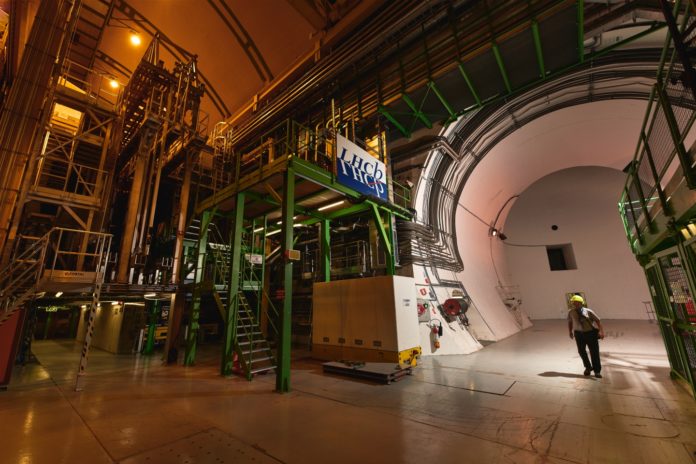The LHCb collaboration has discovered three never before seen particles in high-energy proton collisions at the Large Hadron Collider (LHC). These new particles belong to the same family of particles like the protons that the LHC accelerates and collides: baryons, which are made up of three quarks.
Basically, scientists detected two particles and also hints of another new particle. The two particles dubbed Σb(6097)+ and Σb(6097)-, are bottom baryons composed of one bottom quark and two up quarks (buu) or one bottom quark and two down quarks (bdd) respectively.
There are four relatives of the particles, known as Σb+, Σb-, Σb*+, and Σb*-, were first observed at a Fermilab experiment, but this is the first time that their two higher-mass counterparts, Σb(6097)+ and Σb(6097)-, have been detected.
The discovery is made by using the classic particle-hunting technique that looks for an excess of events or bumps, over a smooth background of events in data from particle collisions.
Scientists observed for such bumps in the mass distribution of a two-particle system consisting of a neutral baryon called Λb0 and a charged quark-antiquark particle called the π meson.
They discovered two bumps relating to the Σb(6097)+ and Σb(6097)- particles, with the astounding significances of 12.7 and 12.6 standard deviations respectively; five standard deviations is the typical limit to guarantee the disclosure of new particle. The 6097 in the names alludes to the approximate masses of the new particles in MeV, around six times more huge than the proton.
The third particle, named Zc-(4100) by the LHCb collaboration, is a possible candidate for a different type of quark beast, one made not of the usual two or three quarks but of four quarks (strictly speaking, two quarks and two antiquarks), two of which are heavy charm quarks. Such exotic mesons, sometimes described as “tetraquarks”, as well as five-quark particles called “pentaquarks”, have long been predicted to exist but have only relatively recently been discovered.
Hunting down structures in the decays of heavier B mesons, the LHCb scientists identified proof for Zc-(4100) with a noteworthiness of in excess of three standard deviations, short of the limit for disclosure. Future investigations with more information, at LHCb or at different analyses, might have the capacity to support or invalidate this proof.
The new findings, described in two papers posted online and submitted for publication to physics journals, represent another step in physicists’ understanding of the strong force, one of the four fundamental forces of nature.
